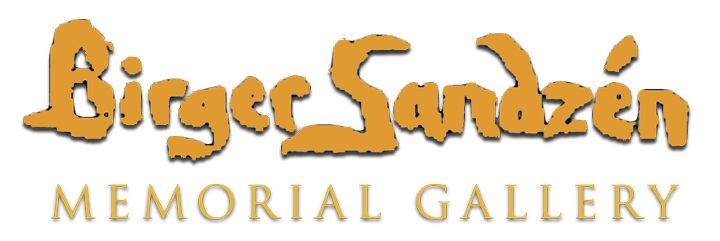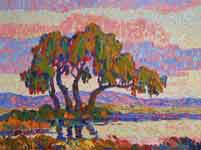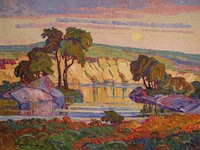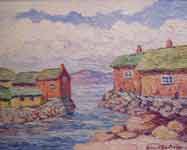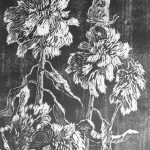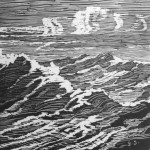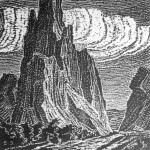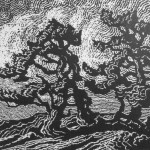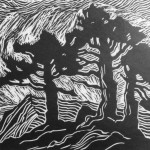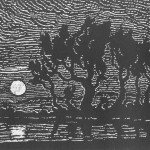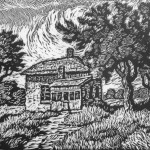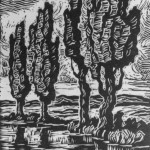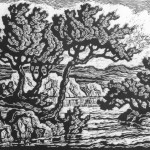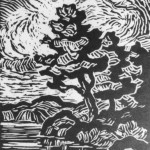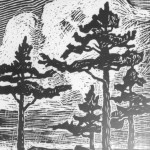Birger Sandzén created block prints using two materials, wood and linoleum. Initially, he created traditional woodcuts using gouges to cut impressions in a wood block. He also developed a pointillist technique utilizing the tip of a square nail to make impressions in the block. His daughter, Margaret, referred to these works as nailcuts. Later, beginning in 1921, he produced linoleum cuts.
For his traditional woodcut and linoleum cut block prints, Sandzén used a V-shaped gouge to carve out impressions in a piece of wood or linoleum attached to wood. After completing the carving, he would send the block to a printer (usually the Lindsborg News-Record or Bethany Press) where an edition of prints would be created. To print the block, a layer of ink was rolled on the surface of the cut linoleum, a piece of paper was laid down, and then both were run through a press. The paper would pick up the inked surface areas. Areas carved away did not register or print – showing only the paper. Once the edition was complete, the prints would be given to Sandzén. Like his other prints, below the image he would write the title of the print and sign it in pencil. If he made changes in the block between editions, that change is referred to as a new “state.”
Sandzén created 94 block prints (17 are traditional woodcuts, 34 are nailcuts and 43 are linoleum cuts).
- Chinese Woolflowers, 1916, woodcut.
- Rough Sea, 1917, woodcut.
- Among the Red Rocks, 1917, nailcut.
- Sentinel Pines, 1919, nailcut.
- Sunset, 1921, linoleum cut.
- Moonrise on the Smoky River, 1922, nailcut.
- Smoky Valley Homestead, 1929, linoleum cut, first state.
- Brook with Poplars, 1932, linoleum cut.
- Republican River, 1945, linoleum cut, first state.
- Colorado Stream, 1952, linoleum cut.
- Pines, 1916, woodcut.
